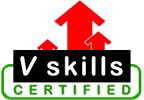1. What is the main purpose of a Management Information System (MIS)?
A) To store large volumes of data
B) To assist in decision-making by providing relevant information
C) To manage human resources effectively
D) To automate all operational processes
Answer: B) To assist in decision-making by providing relevant information
2. Which of the following is NOT an objective of an MIS?
A) To provide accurate and timely information
B) To support managerial decision-making
C) To integrate data from various departments
D) To develop hardware and software for the organization
Answer: D) To develop hardware and software for the organization
3. Which type of information system helps in day-to-day operations and controls the basic functions of an organization?
A) Decision Support System (DSS)
B) Executive Information System (EIS)
C) Transaction Processing System (TPS)
D) Knowledge Management System (KMS)
Answer: C) Transaction Processing System (TPS)
4. In which type of system are managers provided with summarized and exception reports for decision-making?
A) Transaction Processing System (TPS)
B) Decision Support System (DSS)
C) Executive Information System (EIS)
D) Management Information System (MIS)
Answer: D) Management Information System (MIS)
5. Which of the following best defines a "Decision Support System" (DSS)?
A) A system that automates operational processes
B) A system designed to provide detailed reports to senior executives
C) A system that helps managers make non-routine decisions by analyzing large volumes of data
D) A system that stores and processes transactional data
Answer: C) A system that helps managers make non-routine decisions by analyzing large volumes of data
6. Which of the following is an example of a data processing component in an MIS?
A) Database Management System (DBMS)
B) Executive Decision Support Tools
C) Transaction Processing System
D) Statistical Analysis Software
Answer: A) Database Management System (DBMS)
7. What does the "E" in "EIS" stand for?
A) Enhanced
B) Executive
C) Electronic
D) Environmental
Answer: B) Executive
8. Which of the following is a major advantage of a computerized Management Information System (MIS)?
A) High cost of implementation
B) High level of human intervention required
C) Real-time information processing
D) Increased paperwork and documentation
Answer: C) Real-time information processing
9. Which of the following is a characteristic of an effective MIS?
A) It is designed only for top management
B) It processes and disseminates data as quickly as possible
C) It stores all types of organizational data, including irrelevant data
D) It eliminates the need for decision-making
Answer: B) It processes and disseminates data as quickly as possible
10. Which of the following is NOT typically a component of a Management Information System?
A) Data Collection
B) Data Analysis
C) Data Storage
D) Data Visualization
Answer: D) Data Visualization
